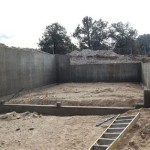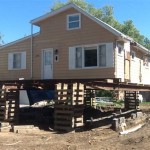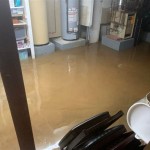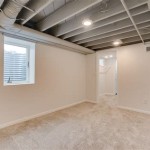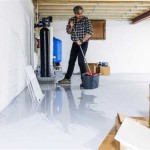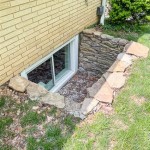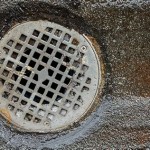What Temperature Should A Basement Dehumidifier Be Set At?
Maintaining a comfortable and healthy basement environment often requires addressing humidity levels. Basements, by nature, are prone to dampness due to their location below ground level and proximity to soil moisture. Dehumidifiers are commonly employed to combat this issue, but determining the optimal temperature setting for a basement dehumidifier is crucial for effective moisture control and energy efficiency. Setting the dehumidifier to the appropriate temperature ensures it operates effectively without wasting energy or potentially damaging the unit.
The ideal dehumidifier setting is influenced by several factors, including ambient temperature, relative humidity, and the specific characteristics of the basement itself. A one-size-fits-all approach is not suitable; rather, understanding these variables allows for a tailored setting that maximizes dehumidification while minimizing energy consumption. This article explores the key considerations for determining the appropriate temperature setting for a basement dehumidifier.
Understanding Relative Humidity and Its Importance
Relative humidity (RH) is the measurement of the amount of moisture present in the air, expressed as a percentage of the maximum amount of moisture the air can hold at a given temperature. Warmer air can hold more moisture than cooler air. In basements, maintaining a healthy RH level is essential to prevent mold growth, musty odors, and damage to stored items. High humidity levels create an environment conducive to the proliferation of mold and mildew, which can trigger allergies and respiratory problems. Furthermore, excessive moisture can lead to structural damage, such as rotting wood and corroded metal.
The Environmental Protection Agency (EPA) recommends maintaining indoor relative humidity levels between 30% and 50%. This range is considered optimal for preventing mold growth and maintaining occupant comfort. In many basements, achieving this range requires the use of a dehumidifier, particularly during humid seasons or in regions with consistently high humidity. Monitoring the humidity levels is imperative to adjusting the dehumidifier accordingly. A simple hygrometer or humidity sensor can provide accurate readings of the basement's RH, enabling informed adjustments to the dehumidifier setting.
The relationship between temperature and relative humidity is critical. As temperature decreases, the relative humidity increases, assuming the amount of moisture in the air remains constant. This means that in cooler basements, the relative humidity can be significantly higher than in warmer areas of the house. This necessitates a lower humidity target on the dehumidifier in cooler environments to achieve the same level of dryness. Ignoring this relationship can lead to inefficient dehumidifier operation and a persistent moisture problem.
Factors Influencing Dehumidifier Temperature Settings
Several interconnected factors determine the appropriate temperature setting for a basement dehumidifier. These factors need careful consideration to maximize the efficiency and effectiveness of the dehumidifier. These are among them:
*Ambient Basement Temperature:
The temperature of the basement is a primary determinant of the dehumidifier setting. Most dehumidifiers are designed to operate within a specific temperature range, typically between 65°F (18°C) and 90°F (32°C). Operating a dehumidifier outside this range can reduce its efficiency or even damage the unit. In cooler basements, a lower dehumidifier setting may be necessary to achieve the desired RH level. Conversely, in warmer basements, a higher setting may suffice. If the basement temperature frequently drops below 65°F (18°C), a low-temperature dehumidifier specifically designed for colder environments should be considered. These models often incorporate features like auto-defrost to prevent ice buildup on the coils, which can impede their performance. *Desired Relative Humidity Level:
The target RH level is another critical factor. As mentioned earlier, the EPA recommends maintaining an RH between 30% and 50%. If the primary goal is to prevent mold growth, aiming for the lower end of this range (30%-40%) is advisable. For basic comfort and to prevent musty odors, a slightly higher range (40%-50%) may be sufficient. The dehumidifier setting should be adjusted to achieve and maintain the desired RH level. Regular monitoring of the RH with a hygrometer is essential to ensure the dehumidifier is operating effectively and that the target RH is consistently met. *Basement Size and Insulation:
The size of the basement and the quality of its insulation also influence the dehumidifier setting. Larger basements require more powerful dehumidifiers or longer operating times to achieve the desired RH level. Poorly insulated basements are more susceptible to temperature fluctuations and external humidity infiltration, requiring more frequent and potentially more aggressive dehumidification. Improving insulation can reduce the load on the dehumidifier and improve overall energy efficiency. Sealing air leaks and insulating walls and floors can significantly reduce the amount of moisture entering the basement, allowing the dehumidifier to operate more efficiently and at a potentially higher temperature setting. *External Climate and Season:
The external climate and seasonal variations in humidity levels play a significant role. During humid summer months, the dehumidifier will likely need to operate more frequently and at a lower setting to maintain the desired RH. In drier winter months, the dehumidifier may not be needed as often, or it may be set to a higher temperature. Monitoring the external humidity levels and adjusting the dehumidifier setting accordingly can optimize its performance and prevent over-drying the air. Setting the dehumidifier to automatic mode, if available, can help it adapt to changing humidity conditions, automatically adjusting its operation to maintain the desired RH level.Practical Guidelines for Setting Your Dehumidifier
Based on the preceding factors, the following guidelines can help determine the appropriate temperature setting for a basement dehumidifier:
*Initial Setup:
Begin by monitoring the baseline relative humidity and temperature in the basement. Use a hygrometer to measure the RH over a period of a few days to establish a baseline. Note the average temperature during this period. Start by setting the dehumidifier to a moderate setting, such as 50% RH and a temperature within the recommended operating range of the unit (typically between 65°F (18°C) and 90°F (32°C)). Observe how the RH changes over the next 24-48 hours. *Adjusting the Setting:
If the RH remains above the desired level (e.g., above 50%), lower the dehumidifier setting by small increments (e.g., 5% RH). Allow sufficient time (24-48 hours) between adjustments for the dehumidifier to reach equilibrium. Continue lowering the setting until the desired RH is consistently maintained. If the dehumidifier is running constantly and struggling to reach the desired RH, it may indicate that the unit is undersized for the basement or that there are significant sources of moisture intrusion. Consider upgrading to a more powerful dehumidifier or addressing underlying moisture issues. *Cold Basements:
In basements with consistently low temperatures (below 65°F (18°C)), a standard dehumidifier may not operate efficiently. Consider using a low-temperature dehumidifier specifically designed for colder environments. If using a standard dehumidifier, start with a higher RH setting (e.g., 60%) and gradually lower it until the desired RH is achieved. Monitor the dehumidifier for ice buildup on the coils, which can indicate that the temperature is too low for optimal operation. *Regular Monitoring:
Regularly monitor the RH in the basement to ensure the dehumidifier is operating effectively. Use a hygrometer to check the RH at least once a week, and more frequently during periods of high humidity or significant temperature changes. Adjust the dehumidifier setting as needed to maintain the desired RH level. Consider using a smart dehumidifier with built-in humidity sensors and remote monitoring capabilities. These devices allow you to track RH levels in real-time and adjust the dehumidifier setting from your smartphone or tablet. *Energy Efficiency:
To maximize energy efficiency, avoid setting the dehumidifier to a lower RH than necessary. Over-drying the air can waste energy and potentially damage wooden furniture or other materials. Consider using the dehumidifier's automatic mode, if available, which will automatically adjust its operation based on the current RH. Ensure that the dehumidifier's air filter is cleaned regularly to maintain optimal airflow and energy efficiency. A clogged filter can reduce the dehumidifier's performance and increase energy consumption. *Addressing Moisture Sources:
While a dehumidifier can effectively remove moisture from the air, it is essential to address underlying sources of moisture intrusion. Repair any leaks in the foundation, walls, or plumbing. Ensure proper drainage around the foundation to prevent water from seeping into the basement. Consider improving the basement's ventilation to allow for better air circulation and reduce moisture buildup. Addressing these issues will reduce the load on the dehumidifier and improve its overall effectiveness.By understanding the relationship between temperature, relative humidity, and dehumidifier settings, it is possible to create a comfortable and healthy basement environment while optimizing energy efficiency. Regular monitoring and adjustments are key to maintaining the desired RH level and preventing moisture-related problems.

Dehumidifier Setting Chart What Should Be Set At

What Is The Best Humidity Setting For A Dehumidifier

How To Set Your Dehumidifier Ideal Setting Sylvane

Dehumidifier Operating Temperatures What You Need To Know Sylvane

How To Set Your Dehumidifier Ideal Setting Sylvane

What Is The Best Basement Dehumidifier Reviews

What Humidity Should I Set My Dehumidifier To

Top Basement Dehumidifier To Say Goodbye High Humidity

Measuring The Efficiency Of A Room Dehumidifier Energy Vanguard

When Should I Turn Off My Dehumidifier Here S The Answer Experts
